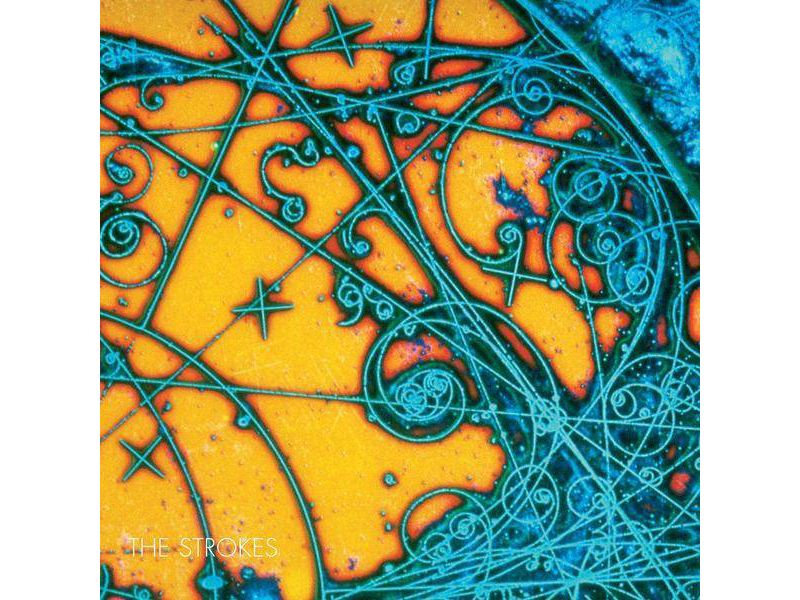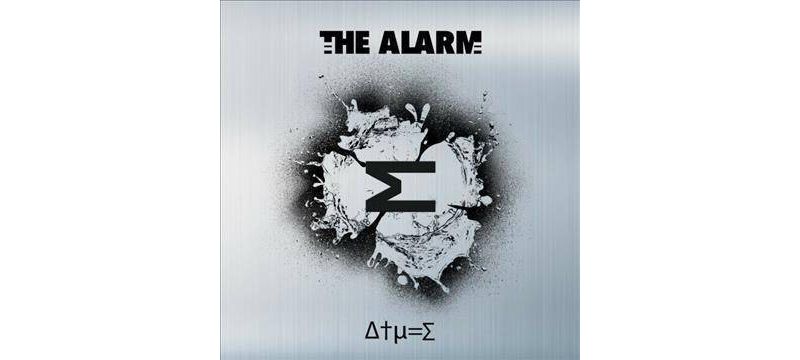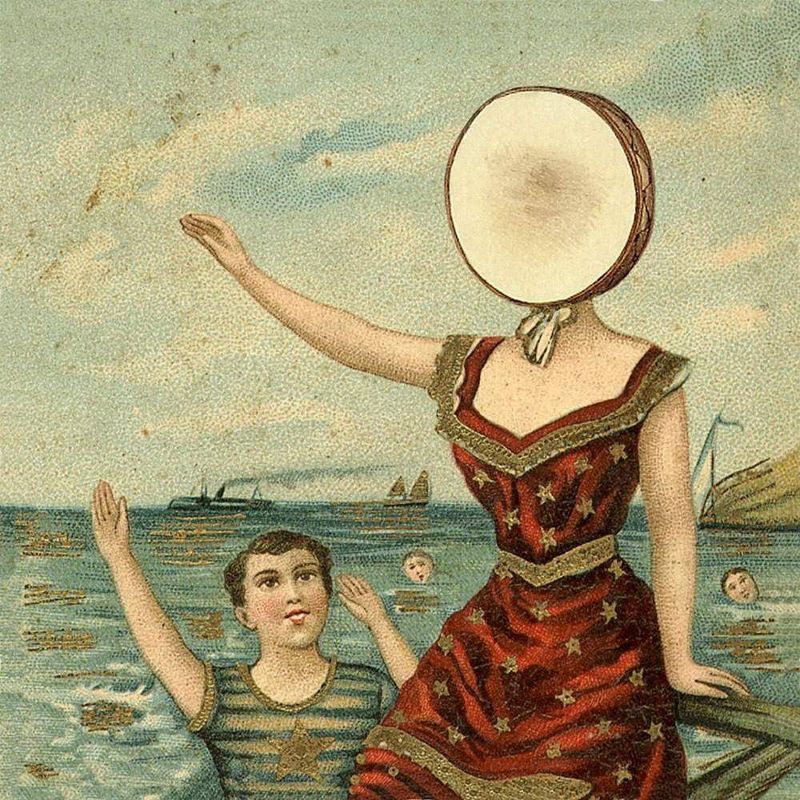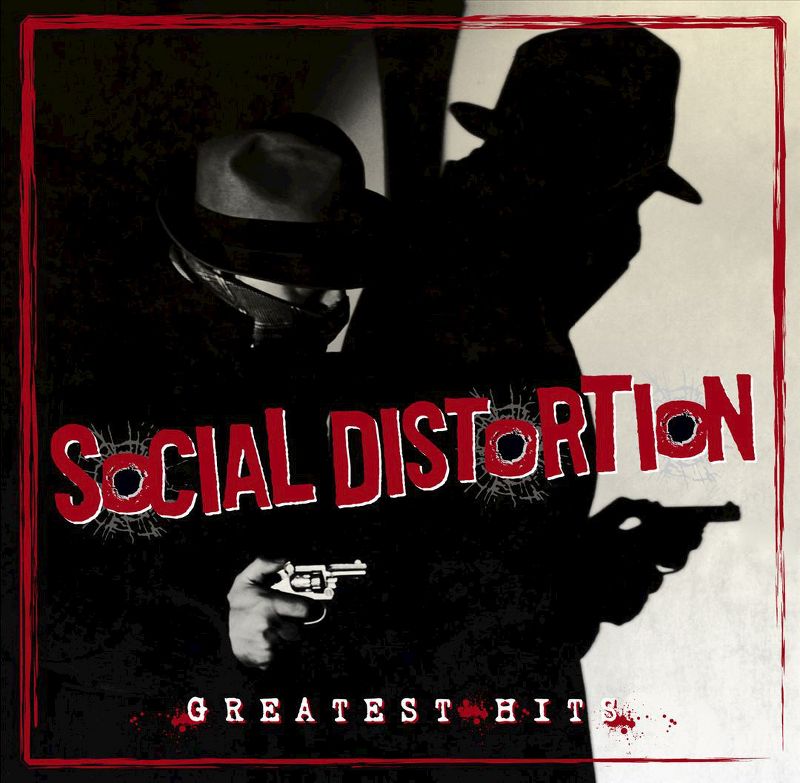Trusted shipping
Easy returns
Secure shopping
Buy The Beatles Magical Mystery Tour 180g LP (Vinyl) in United States - Cartnear.com

The Beatles Magical Mystery Tour 180g LP (Vinyl)
CTNR1831064 CTNR1831064EMI
2026-07-04
/itm/the-beatles-magical-mystery-tour-180g-lp-vinyl-1831064
USD
42.33
$ 42.33 $ 43.19 2% Off
Item Added to Cart
customer
*Product availability is subject to suppliers inventory
SHIPPING ALL OVER UNITED STATES
100% MONEY BACK GUARANTEE
EASY 30 DAYSRETURNS & REFUNDS
24/7 CUSTOMER SUPPORT
TRUSTED AND SAFE WEBSITE
100% SECURE CHECKOUT
| Genre | Pop Rock |
|---|---|
| Artist | The Beatles |
Rolling Stone 500 Greatest Songs of All Time - "Penny Lane" - Rated 456/500, "All You Need Is Love" - Rated 370/500!
180g Vinyl LP! Cut at Abbey Road Studios using the Non-Limited 24-bit Digital Masters Sourced from the Original Analog Master Tapes!
Magical Mystery Tour was originally released in 1967 and is the soundtrack to a one-hour TV film of the same name. Originally, the UK version was a double EP but was expanded to a full album for the U.S. release.
The wait is finally over, The Beatles catalog is getting the audiophile treatment! 180 Gram Vinyl Pressings Cut at Abbey Road Studios using the Non-Limited 24-bit Digital Masters Sourced from the Original Analog Master Tapes!
THE BEATLES ACCLAIMED STUDIO ALBUM REMASTERS ON 180-GRAM VINYL:
Pressed on 180-Gram, Audiophile Quality Vinyl with replicated artwork, The Beatles 14 albums return to their original glory! No detail was spared, including the poster in The Beatles (The White Album), the Sgt. Peppers Lonely Heart Club Bands cutouts, and special inner bags for some of the titles. Each album is available individually, or as a Stereo Box Set which is accompanied by a stunning, elegantly designed 252-page hardbound book housed in a lavish box which is limited to 50,000 copies worldwide!
The book, exclusive to the boxed edition, is authored by award-winning radio producer Kevin Howlett and features a dedicated chapter for each of the albums, as well as insight into the creation of the remasters and how the vinyl albums were prepared. The 12x12 book showcases a wealth of photographs spanning The Beatles recording career, including many images which were not included in the 2009 CD booklets.
The titles include The Beatles 12 original UK albums, first released between 1963 and 1970, the US-originated Magical Mystery Tour, now part of the groups core catalogue, and Past Masters, Volumes One & Two, featuring non-album A-sides and B-sides, EP tracks and rarities. With this release, The Beatles first four albums make their North American stereo vinyl debuts. In 2013, the remastered albums will make their mono vinyl debuts.
Since it was recorded, The Beatles music has been heard on a variety of formats from chunky reel-to-reel tapes and eight-track cartridges to invisible computer files. But there has never been a more romantic or thrilling medium for music than a long-playing twelve-inch disc. We play records. The process of carefully slipping the disc out of the sleeve, cleaning it and lowering the stylus provides a personal involvement in the reproduction of the music.
When The Beatles albums were first released, the listener enjoyed a tangible relationship with the music in the grooves of a record. There was an emotional connection to the artifact carrying the sound, and this bond was strengthened by the LP sleeve. Rather than a merely functional object to protect the disc, it was elevated to a stylish accessory. Certainly, the cover of a Beatles album conveyed a message about the music it was wrapped around. For example, the dominant orange and brown hues and elongated faces on the front of Rubber Soul seem to embody the sound of the record. With the advent of the cassette tape in the seventies and the compact disc in the 1980s, album artwork was reduced in size and importance, losing much of its charm. That is partly why vinyl LPs have not, as predicted, been discarded.
None of that would really matter, were it not for the enduring power of The Beatles music. In September, 2009, The Beatles remastered albums on CD graced charts around the world. Seventeen million album sales within seven months was resounding evidence of the timeless relevance of their legacy. Through five decades, the music of The Beatles has captivated generation upon generation.
For producer Rick Rubin, surveying The Beatles recorded achievements is akin to witnessing a miracle. If we look at it by todays standards, whoever the most popular bands in the world are, they will typically put out an album every four years, Rubin said in a 2009 radio series interview. So, lets say two albums as an eight year cycle. And think of the growth or change between those two albums. The idea that The Beatles made thirteen albums in seven years and went through that arc of change... it cant be done. Truthfully, I think of it as proof of God, because its beyond mans ability.
REMASTERING THE BEATLES ORIGINAL STUDIO ALBUMS FOR VINYL:
There has always been demand for The Beatles albums on vinyl. Indeed, 2011s best-selling vinyl LP in the United States was Abbey Road. Following the success of The Beatles acclaimed, GRAMMY Award-winning 2009 CD remasters, it was decided that the sound experts at EMIs Abbey Road Studios should create new versions of The Beatles vinyl LPs. The project demanded the same meticulous approach taken for the CD releases, and the idea was a simple one: cut the digital remasters to vinyl with an absolute minimum of compromise to the sound. However, the process involved to do that was far from simple.
The first stage in transferring the sound of a master recording to vinyl is the creation of a disc to be used during vinyl manufacture. There were two options to consider. A Direct Metal Master (DMM), developed in the late seventies, allows sound to be cut directly into a stainless steel disc coated with a hard copper alloy. The older, alternative method is to cut the sound into the soft lacquer coating on a nickel disc - the first of several steps leading to the production of a stamper to press the vinyl.
A blind listening test was arranged to choose between a lacquer or copper cut. Using both methods, A Hard Days Night was pressed with ten seconds of silence at the beginning and end of each side. This allowed not only the reproduction of the music to be assessed, but also the noise made by the vinyl itself. After much discussion, two factors swung the decision towards using the lacquer process. First, it was judged to create a warmer sound than a DMM. Secondly, there was a practical advantage of having blank discs of a consistent quality when cutting lacquers.
The next step was to use the Neumann VMS80 cutting lathe at Abbey Road. Following thorough mechanical and electrical tests to ensure it was operating in peak condition, engineer Sean Magee cut the LPs in chronological release order. He used the 24-bit Digital Masters Sourced from the Original Analog Master Tapes rather than the 16-bit versions that were required for CD production. It was also decided to use the remasters that had not undergone limiting - a procedure to increase the sound level, which is deemed necessary for most current pop CDs.
Having made initial test cuts, Magee pinpointed any sound problems that can occur during playback of vinyl records. To rectify them, changes were made to the remasters with a Digital Audio Workstation. For example, each vinyl album was listened to for any sibilant episodes - vocal distortion that can occur on consonant sounds such as S and T. These were corrected by reducing the level in the very small portion of sound causing the undesired effect. Similarly, any likelihood of inner-groove distortion was addressed. As the stylus approaches the centre of the record, it is liable to track the groove less accurately. This can affect the high-middle frequencies, producing a mushy sound particularly noticeable on vocals. Using what Magee has described as surgical EQ, problem frequencies were identified and reduced in level to compensate for this.
The last phase of the vinyl mastering process began with the arrival of the first batches of test pressings made from master lacquers that had been sent to the two pressing plant factories. Stringent quality tests identified any noise or click appearing on more than one test pressing in the same place. If this happened, it was clear that the undesired sounds had been introduced either during the cutting or the pressing stage and so the test records were rejected. In the quest to achieve the highest quality possible, the Abbey Road team worked closely with the pressing factories and the manufacturers of the lacquer and cutting styli.
An additional and unusual challenge was to ensure the proper playback of the sounds embedded in the lock-groove at the end of side two of Sgt. Peppers Lonely Hearts Club Band. Requiring a combination of good timing and luck, it had always been a lengthy and costly process to make it work properly. In fact, it was so tricky, it had never been attempted for American pressings of the LP. Naturally, Sean Magee and the team perfected this and the garbled message is heard as originally intended on the remastered Sgt. Pepper LP.
Highly-skilled technicians have worked long and hard to make The Beatles on vinyl sound better than ever. All we need to do is listen to the results of their dedicated labour on the remastered LPs. Handle with care. But most of all, enjoy the music.
"After Lennon composed 'Strawberry Fields Forever,' McCartney wrote his own snappy memoir. Penny Lane was a Liverpool bus stop where Lennon and McCartney often met. 'John came over and helped me with the third verse, as was often the case,' McCartney said. 'We were writing recently faded memories from eight or 10 years before.'" - Rolling Stone
"Twenty-four days after the release of Sgt. Pepper, the Beatles represented England on the six hour TV show Our World, a satellite broadcast seen by 400 million. 'All You Need Is Love' was the simple message they wanted to send to the world. 'It was for love and bloody peace,' Ringo Starr said. The backing choir on the single included Mick Jagger, Keith Moon and Donovan." - Rolling Stone
Features:
Available for the First Time on 180 Gram Vinyl
Cut at Abbey Road Studios using the Non-Limited 24-bit Digital Masters Sourced from the Original Analog Master Tapes!
Selections:
1. Magical Mystery Tour
2. The Fool On The Hill
3. Flying
4. Blue Jay Way
5. Your Mother Should Know
6. I Am The Walrus
7. Hello, Goodbye
8. Strawberry Fields Forever
9. Penny Lane
10. Baby You're A Rich Man
11. All You Need Is Love
180g Vinyl LP! Cut at Abbey Road Studios using the Non-Limited 24-bit Digital Masters Sourced from the Original Analog Master Tapes!
Magical Mystery Tour was originally released in 1967 and is the soundtrack to a one-hour TV film of the same name. Originally, the UK version was a double EP but was expanded to a full album for the U.S. release.
The wait is finally over, The Beatles catalog is getting the audiophile treatment! 180 Gram Vinyl Pressings Cut at Abbey Road Studios using the Non-Limited 24-bit Digital Masters Sourced from the Original Analog Master Tapes!
THE BEATLES ACCLAIMED STUDIO ALBUM REMASTERS ON 180-GRAM VINYL:
Pressed on 180-Gram, Audiophile Quality Vinyl with replicated artwork, The Beatles 14 albums return to their original glory! No detail was spared, including the poster in The Beatles (The White Album), the Sgt. Peppers Lonely Heart Club Bands cutouts, and special inner bags for some of the titles. Each album is available individually, or as a Stereo Box Set which is accompanied by a stunning, elegantly designed 252-page hardbound book housed in a lavish box which is limited to 50,000 copies worldwide!
The book, exclusive to the boxed edition, is authored by award-winning radio producer Kevin Howlett and features a dedicated chapter for each of the albums, as well as insight into the creation of the remasters and how the vinyl albums were prepared. The 12x12 book showcases a wealth of photographs spanning The Beatles recording career, including many images which were not included in the 2009 CD booklets.
The titles include The Beatles 12 original UK albums, first released between 1963 and 1970, the US-originated Magical Mystery Tour, now part of the groups core catalogue, and Past Masters, Volumes One & Two, featuring non-album A-sides and B-sides, EP tracks and rarities. With this release, The Beatles first four albums make their North American stereo vinyl debuts. In 2013, the remastered albums will make their mono vinyl debuts.
Since it was recorded, The Beatles music has been heard on a variety of formats from chunky reel-to-reel tapes and eight-track cartridges to invisible computer files. But there has never been a more romantic or thrilling medium for music than a long-playing twelve-inch disc. We play records. The process of carefully slipping the disc out of the sleeve, cleaning it and lowering the stylus provides a personal involvement in the reproduction of the music.
When The Beatles albums were first released, the listener enjoyed a tangible relationship with the music in the grooves of a record. There was an emotional connection to the artifact carrying the sound, and this bond was strengthened by the LP sleeve. Rather than a merely functional object to protect the disc, it was elevated to a stylish accessory. Certainly, the cover of a Beatles album conveyed a message about the music it was wrapped around. For example, the dominant orange and brown hues and elongated faces on the front of Rubber Soul seem to embody the sound of the record. With the advent of the cassette tape in the seventies and the compact disc in the 1980s, album artwork was reduced in size and importance, losing much of its charm. That is partly why vinyl LPs have not, as predicted, been discarded.
None of that would really matter, were it not for the enduring power of The Beatles music. In September, 2009, The Beatles remastered albums on CD graced charts around the world. Seventeen million album sales within seven months was resounding evidence of the timeless relevance of their legacy. Through five decades, the music of The Beatles has captivated generation upon generation.
For producer Rick Rubin, surveying The Beatles recorded achievements is akin to witnessing a miracle. If we look at it by todays standards, whoever the most popular bands in the world are, they will typically put out an album every four years, Rubin said in a 2009 radio series interview. So, lets say two albums as an eight year cycle. And think of the growth or change between those two albums. The idea that The Beatles made thirteen albums in seven years and went through that arc of change... it cant be done. Truthfully, I think of it as proof of God, because its beyond mans ability.
REMASTERING THE BEATLES ORIGINAL STUDIO ALBUMS FOR VINYL:
There has always been demand for The Beatles albums on vinyl. Indeed, 2011s best-selling vinyl LP in the United States was Abbey Road. Following the success of The Beatles acclaimed, GRAMMY Award-winning 2009 CD remasters, it was decided that the sound experts at EMIs Abbey Road Studios should create new versions of The Beatles vinyl LPs. The project demanded the same meticulous approach taken for the CD releases, and the idea was a simple one: cut the digital remasters to vinyl with an absolute minimum of compromise to the sound. However, the process involved to do that was far from simple.
The first stage in transferring the sound of a master recording to vinyl is the creation of a disc to be used during vinyl manufacture. There were two options to consider. A Direct Metal Master (DMM), developed in the late seventies, allows sound to be cut directly into a stainless steel disc coated with a hard copper alloy. The older, alternative method is to cut the sound into the soft lacquer coating on a nickel disc - the first of several steps leading to the production of a stamper to press the vinyl.
A blind listening test was arranged to choose between a lacquer or copper cut. Using both methods, A Hard Days Night was pressed with ten seconds of silence at the beginning and end of each side. This allowed not only the reproduction of the music to be assessed, but also the noise made by the vinyl itself. After much discussion, two factors swung the decision towards using the lacquer process. First, it was judged to create a warmer sound than a DMM. Secondly, there was a practical advantage of having blank discs of a consistent quality when cutting lacquers.
The next step was to use the Neumann VMS80 cutting lathe at Abbey Road. Following thorough mechanical and electrical tests to ensure it was operating in peak condition, engineer Sean Magee cut the LPs in chronological release order. He used the 24-bit Digital Masters Sourced from the Original Analog Master Tapes rather than the 16-bit versions that were required for CD production. It was also decided to use the remasters that had not undergone limiting - a procedure to increase the sound level, which is deemed necessary for most current pop CDs.
Having made initial test cuts, Magee pinpointed any sound problems that can occur during playback of vinyl records. To rectify them, changes were made to the remasters with a Digital Audio Workstation. For example, each vinyl album was listened to for any sibilant episodes - vocal distortion that can occur on consonant sounds such as S and T. These were corrected by reducing the level in the very small portion of sound causing the undesired effect. Similarly, any likelihood of inner-groove distortion was addressed. As the stylus approaches the centre of the record, it is liable to track the groove less accurately. This can affect the high-middle frequencies, producing a mushy sound particularly noticeable on vocals. Using what Magee has described as surgical EQ, problem frequencies were identified and reduced in level to compensate for this.
The last phase of the vinyl mastering process began with the arrival of the first batches of test pressings made from master lacquers that had been sent to the two pressing plant factories. Stringent quality tests identified any noise or click appearing on more than one test pressing in the same place. If this happened, it was clear that the undesired sounds had been introduced either during the cutting or the pressing stage and so the test records were rejected. In the quest to achieve the highest quality possible, the Abbey Road team worked closely with the pressing factories and the manufacturers of the lacquer and cutting styli.
An additional and unusual challenge was to ensure the proper playback of the sounds embedded in the lock-groove at the end of side two of Sgt. Peppers Lonely Hearts Club Band. Requiring a combination of good timing and luck, it had always been a lengthy and costly process to make it work properly. In fact, it was so tricky, it had never been attempted for American pressings of the LP. Naturally, Sean Magee and the team perfected this and the garbled message is heard as originally intended on the remastered Sgt. Pepper LP.
Highly-skilled technicians have worked long and hard to make The Beatles on vinyl sound better than ever. All we need to do is listen to the results of their dedicated labour on the remastered LPs. Handle with care. But most of all, enjoy the music.
"After Lennon composed 'Strawberry Fields Forever,' McCartney wrote his own snappy memoir. Penny Lane was a Liverpool bus stop where Lennon and McCartney often met. 'John came over and helped me with the third verse, as was often the case,' McCartney said. 'We were writing recently faded memories from eight or 10 years before.'" - Rolling Stone
"Twenty-four days after the release of Sgt. Pepper, the Beatles represented England on the six hour TV show Our World, a satellite broadcast seen by 400 million. 'All You Need Is Love' was the simple message they wanted to send to the world. 'It was for love and bloody peace,' Ringo Starr said. The backing choir on the single included Mick Jagger, Keith Moon and Donovan." - Rolling Stone
Features:
Available for the First Time on 180 Gram Vinyl
Cut at Abbey Road Studios using the Non-Limited 24-bit Digital Masters Sourced from the Original Analog Master Tapes!
Selections:
1. Magical Mystery Tour
2. The Fool On The Hill
3. Flying
4. Blue Jay Way
5. Your Mother Should Know
6. I Am The Walrus
7. Hello, Goodbye
8. Strawberry Fields Forever
9. Penny Lane
10. Baby You're A Rich Man
11. All You Need Is Love










































